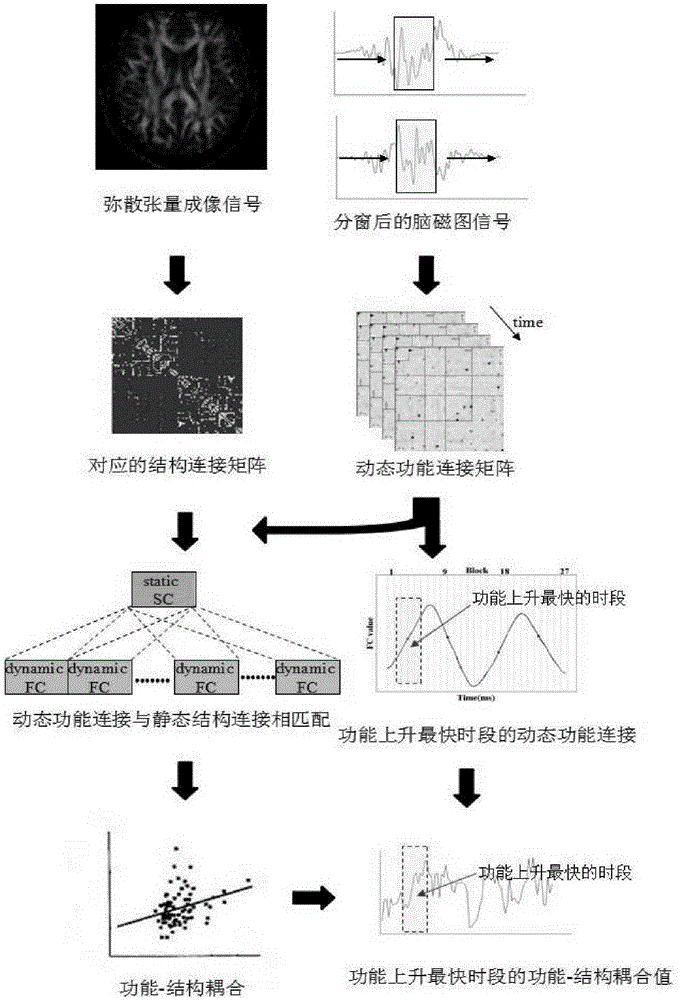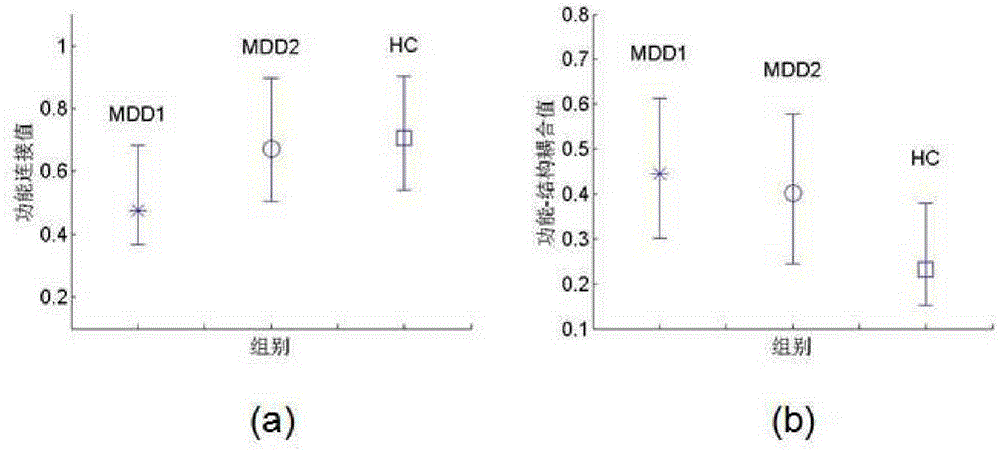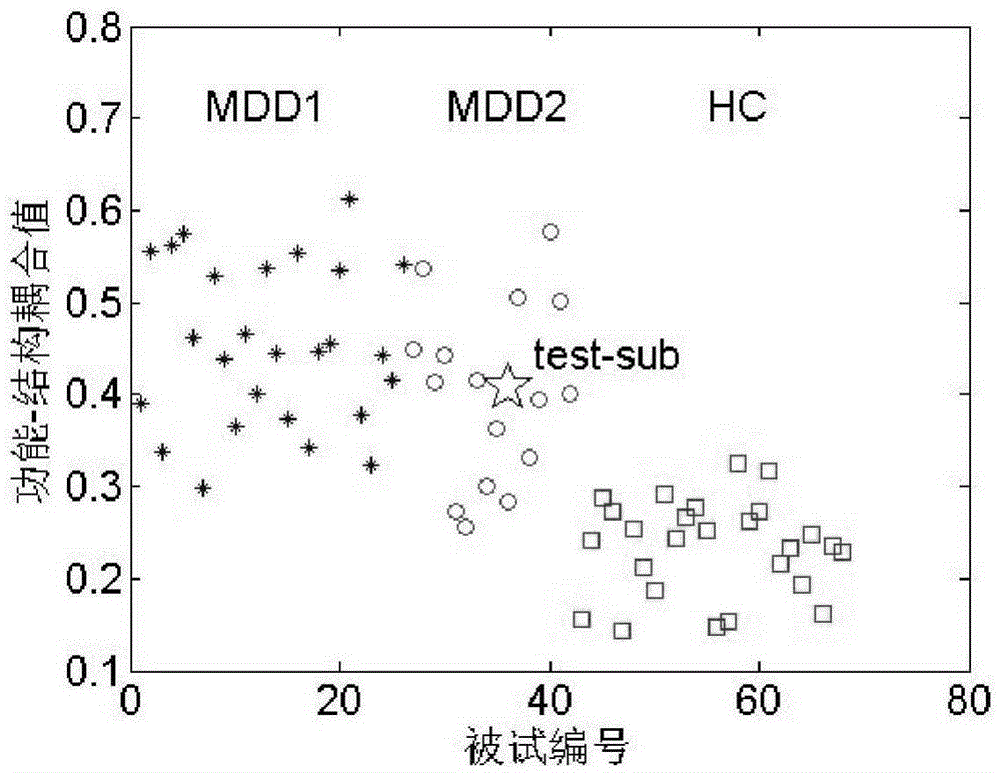Multimodal brain function reconstruction assessment method based on magnetoencephalogram and diffusion tensor imaging
A technology of diffusion tensor imaging and magnetoencephalography, which is applied in the fields of diagnostic recording/measurement, medical science, and special data processing applications, etc. It can solve recurrent seizures, function has not been truly restored, and it is difficult to objectively and timely reflect the true recovery of patients Degree and other issues to achieve the effect of avoiding limitations and avoiding errors
- Summary
- Abstract
- Description
- Claims
- Application Information
AI Technical Summary
Problems solved by technology
Method used
Image
Examples
Embodiment Construction
[0029] Below in conjunction with specific embodiment, further illustrate the present invention, should be understood that these embodiments are only used to illustrate the present invention and are not intended to limit the scope of the present invention, after having read the present invention, those skilled in the art will transform various equivalents of the present invention All fall within the scope defined by the appended claims of this application.
[0030]In this embodiment, 26 untreated patients with depression, 16 patients with depression after treatment, and 26 healthy controls matched in gender, age and education level were selected. Three groups of subjects were tested for magnetoencephalography and diffusion tension. Acquisition of quantitative imaging signals, preprocessing and source reconstruction. The frontoparietal network was selected as the research object, including left intraparietal sulcus, right intraparietal sulcus, left prefrontal lobe, right prefron...
PUM
 Login to View More
Login to View More Abstract
Description
Claims
Application Information
 Login to View More
Login to View More - R&D
- Intellectual Property
- Life Sciences
- Materials
- Tech Scout
- Unparalleled Data Quality
- Higher Quality Content
- 60% Fewer Hallucinations
Browse by: Latest US Patents, China's latest patents, Technical Efficacy Thesaurus, Application Domain, Technology Topic, Popular Technical Reports.
© 2025 PatSnap. All rights reserved.Legal|Privacy policy|Modern Slavery Act Transparency Statement|Sitemap|About US| Contact US: help@patsnap.com



